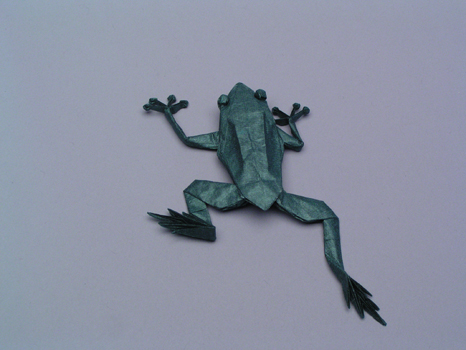Growing Buzz.
Please check out the first review of Signalform + Tachikoma that I could find. Not glowing, but not particularly critical either, and quite a good read!
cruft for the world.
Please check out the first review of Signalform + Tachikoma that I could find. Not glowing, but not particularly critical either, and quite a good read!
Posted by
Stabbington McChopper
at
9:24 p.m.
0
comments
![]()
 Tachikoma and I were hanging out at Jona's Cafe the other day and I sort of mentioned a particular example I often refer to in my presentations. The following is an incomplete excerpt from my Introduction to Graphics Presentation.
Tachikoma and I were hanging out at Jona's Cafe the other day and I sort of mentioned a particular example I often refer to in my presentations. The following is an incomplete excerpt from my Introduction to Graphics Presentation.Tachikoma got me thinking about a re-writable Moon surface, like a re-writable CD that can be erased and then drawn on again. I mentioned it at Jona's and Tachikoma wrote this song that night. It's a new favorite of mine. Like last weeks release it's very Tachikoma sounding, his classic pads massaging the anvil, the subdued clicks and beats keeping the hammer going and the stirup being driven to dreamtown with the tame crazy. There is so much happy in this song. Listen to it and then draw an image to be burnt on the moon and send it to blipsandifs@blipsandifs.com."There are two types of graphics that computers use: Raster (also known as Bitmaps) and Vector graphics. Digital photos, scans and many web graphics are Raster. Common Raster
formats are JPG, TIFF and GIF. These graphics have a resolution, a grid of pixels (picture elements). Images printed from websites will either not look as good, or as big as they do onscreen. The other kind of graphics are shapes defined by mathematical formulas. Vector graphics can be resized without ever loosing quality of line, unlike Raster graphics. True vectors don't ever get jagged, blocky or pixelated. They output at the best of the ability of the device they are being displayed or printed on. Common Vector viewers include Flash Player and Adobe's Acrobat Reader. A photo-realistic vector graphic is possible, but would take a long time to draw, or are would be so complex making it inifficient compared to a Raster of equivilent detail. So in the end, Raster graphics can only be enlarged a certain amount before pixels or a blurring effect occurs, but vectors images could be shrunk down to the size of a postage stamp and then enlarged and burnt into the surface of the moon, with a laser, without any quality loss."
Posted by
Unknown
at
5:41 p.m.
1 comments
![]()
Labels: Superflat Single
Posted by
Unknown
at
8:59 p.m.
0
comments
![]()
 Super Flat Origami:
Super Flat Origami:
This is more of a public note to myself then anything...I just like the thought of it. I was pondering in a day dream what it might be like to have software that could show you how to fold origami. Draw in a form and concept and it would unwrap it and show you how to fold it out of paper. My seach online provided fruitless. Seems this will have to become some form of Audio Toy and I'll have to make one. I can imagine a sort of software like Google's Sketch up, but somehow you wouldn't have to actually draw the object in 3D...just give an impression and the computer would do the rest by guessing or something. I'd imagine the software wouldn't be very good and a randomize or variance button would be good. Click it and it alters the design slightly, plus at anytime the model could be pulled and formed by the user. Again, I'm just thinking out loud here...
The following is an excerpt from "The Mathematics of Paper Folding:
An Interview with Robert Lang" By Margaret Wertheim
"MW: Is there a limit to the complexity of the models you can make with origami?
RL: Mathematically there’s no limit. Theoretically, you can take a finite sheet of paper and you can fold a star shape that has an infinite, arbitrarily large perimeter —10,000 miles, if you like. That shape’s points would have millions of layers in them. So, that’s a problem you can do mathematically but not in practice because, in the real world, paper has a finite thickness and you’re limited in what you can do by the tensile properties of the paper. In the last five to ten years, as people have designed more complex figures, their ability to fold these figures has also been enhanced by improvements in the field of papermaking. So you can now get extremely thin, strong shapes that probably couldn’t have been folded fifteen years ago."
So there you go...Pretty cool thought though eh? You just program in a flaming sword +2 against goblins and VOILA!!! You have your self the foldable blueprints for a flaming sword +2 against goblins. I'm telling you this is gold. You'll see.
Posted by
Unknown
at
7:58 p.m.
1 comments
![]()
Labels: A.T. Field Test